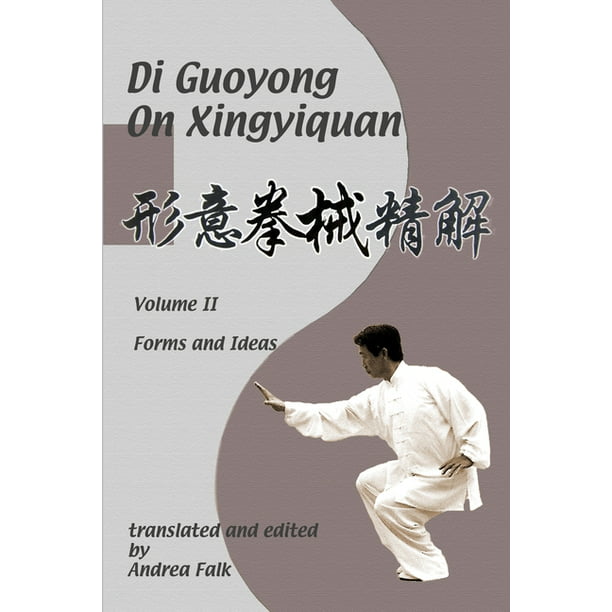Navigation
Install the app
How to install the app on iOS
Follow along with the video below to see how to install our site as a web app on your home screen.
Note: This feature may not be available in some browsers.
More options
Style variation
You are using an out of date browser. It may not display this or other websites correctly.
You should upgrade or use an alternative browser.
You should upgrade or use an alternative browser.
What martial arts book are you currently reading?
- Thread starter arnisador
- Start date
Flying Crane
Sr. Grandmaster
It’s a good little book. I read it a couple times, but many years ago.Came in the mail, looking forward to reading it! I have no Funakoshi books, thought this would be a great start
Graywalker
Brown Belt
Introduction to Karate-Do Its inner techniques and secret arts...by Toyama Kanken. Translated by Tobey Stansbury.
Excellent book
Excellent book
_Simon_
Senior Master
Haven't heard of that one, sounds interesting!Introduction to Karate-Do Its inner techniques and secret arts...by Toyama Kanken. Translated by Tobey Stansbury.
Excellent book
Graywalker
Brown Belt
It is, it was recently translated in Feb 2020. I found mine on ebay.Haven't heard of that one, sounds interesting!
I just ordered Kris Wilder and Lawrence Kane's 'Sun-Tzu- Said'. Kris and Lawerence Slashed Sun Tzu and the kindle version is only $2.99 until Sept 1, 2020. over 700 pages.
https://www.amazon.com/Sun-Tzu-Said...2?ct=t(EMAIL_CAMPAIGN_8_9_2020_15_38_COPY_01)
https://www.amazon.com/Sun-Tzu-Said...2?ct=t(EMAIL_CAMPAIGN_8_9_2020_15_38_COPY_01)
Thanks for post ,I saw it to late to get in the $2.99.I just ordered Kris Wilder and Lawrence Kane's 'Sun-Tzu- Said'. Kris and Lawerence Slashed Sun Tzu and the kindle version is only $2.99 until Sept 1, 2020. over 700 pages.
https://www.amazon.com/Sun-Tzu-Said...2?ct=t(EMAIL_CAMPAIGN_8_9_2020_15_38_COPY_01)
_Simon_
Senior Master
I don't know how I didn't list this... ah well, I finished this one a few weeks ago.. incredible read. The brother of the creator of the Karate Kid movies haha, experienced Goju ryu practitioner, goes into depth as to kata, training etc, and how much more beyond the surface it goes. Really got a lot out of it, right up my alley.

dvcochran
Grandmaster
I recently had a long conversation about the value of poomsae in Korean MA's. Due to their relatively young age many do not see or understand the value of learning forms in depth. I argued that of Korean the form sets, the Palgwe forms had much more depth than any others, especially the newer Taegueks that really only have value in competition. While older, the Pinon (Pyong Ahn) forms are very basic in movements, evolving from the school/academy days of Korean military.I don't know how I didn't list this... ah well, I finished this one a few weeks ago.. incredible read. The brother of the creator of the Karate Kid movies haha, experienced Goju ryu practitioner, goes into depth as to kata, training etc, and how much more beyond the surface it goes. Really got a lot out of it, right up my alley.
View attachment 27148
There are tons of books that talk about the Taeguek forms in regards to the static movements/patterns but very few that talk about any real depth or application, essentially because it does not exist. In a nutshell, it is left up to the instructor or student.
It is understandable why there is so much confusion about them.
_Simon_
Senior Master
Yeah absolutely, especially so many forms teaching such incredible principles that really bring your training to life too.I recently had a long conversation about the value of poomsae in Korean MA's. Due to their relatively young age many do not see or understand the value of learning forms in depth. I argued that of Korean the form sets, the Palgwe forms had much more depth than any others, especially the newer Taegueks that really only have value in competition. While older, the Pinon (Pyong Ahn) forms are very basic in movements, evolving from the school/academy days of Korean military.
There are tons of books that talk about the Taeguek forms in regards to the static movements/patterns but very few that talk about any real depth or application, essentially because it does not exist. In a nutshell, it is left up to the instructor or student.
It is understandable why there is so much confusion about them.
And this book goes even further than that into emotional themes and the energy of different forms, a way of connecting deeply to yourself and the moment, and more 'spiritual' ways of approaching them and using it as a tool for working through your own stuff etc haha. Not everyone's cup of tea but I quite enjoyed it
_Simon_
Senior Master
Finished the previous one finally... now onto this! It's the English translation of Goju Kensha founder Ohtsuka Sensei's 13 Volumes - Instructor Manuals. I've met the translator of this and he's just ridiculously knowledgable, and this text is so comprehensive... can't wait to get stuck into it!

Xue Sheng
All weight is underside
Similar threads
- Replies
- 3
- Views
- 1K
E
- Replies
- 26
- Views
- 5K






